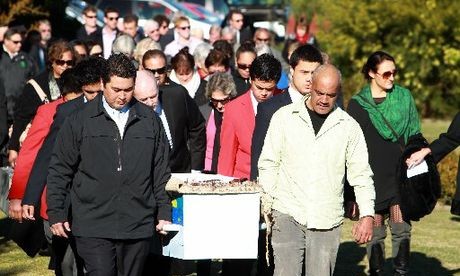The first week of April 2005 was dominated by images of Pope John Paul II’s dead body vested in red, mitred and laid out among his people with bells and books and candles, blessed with water and incense, borne from one station to the next in what began to take shape as a final journey. The front pages of the world’s daily papers were uniform in their iconography: a corpse clothed in sumptuous vestments from head to toe, still as stone and horizontal. Such images, flickering across their ubiquitous screens no doubt gave pause to many Americans, for whom the presence of the dead at their own funerals had gone, strangely out of style.
For many bereaved Americans, the funeral has become instead a ‘celebration of life’. It has a guest list open to everyone except the actual corpse, which is often dismissed, disappeared without rubric or witness, buried or burned, out of sight, out of mind, by paid functionaries such as me — the undertaker. So the visible presence of the Pope’s body at the his funeral struck many as an oddity, a quaint relic of old customs. How ‘Catholic’ some predictably said, or how ‘Italian’, or ‘Polish’, or ‘traditional’; how ‘lavish’, ‘expensive’, or ‘barbaric’.
Instead, what happened in Rome that week followed a pattern as old as the species. It was ‘human’, this immediate focus on the dead and this sense that the living must go the distance with them. Most of nature does not stop for death. But we do. Wherever our spirits go, or don’t, ours is a species that down the millennia has learned to process grief by processing the objects of our grief, the bodies of the dead, from one place to the next. Whatever afterlife there is or isn’t, human beings have marked their ceasing to be by going with their dead — to the tomb or the fire or the grave, the holy tree or deep sea, whatever sacred space of oblivion we consign them to. Continue reading
Sources
- Thomas Lynch in Aeon Magazine
- Image: Hawke’s Bay Today
